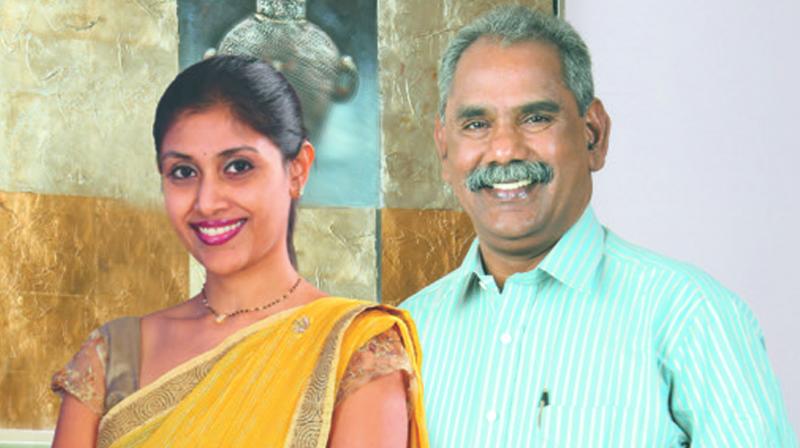Dad, Daughters and Co.
Dr B.S. Rao, Founder and Chairman of Sri Chaitanya Educational Institutions, is an icon in the field of higher education.

If practising medicine was his profession, being an educationist is his passion. Dr Boppana Satyanarayana Rao started Sri Chaitanya Junior Colleges in 1986 with just one branch consisting of only 56 students. “There was no expansion for nine years though students increased from 56 to a thousand. Expanding into other locations really took off only after 1995,” says the Chairman of Sri Chaitanya Educational Institutions.
What started small is now more than 300 branches strong and spread across the country. Walking us through his entrepreneurial journey, the 70-year-old says that his search for a good college for his daughter resulted in him becoming an entrepreneur. “I was working in Iran and had visited India to look for a school for my children, but couldn’t find an exclusive college for girls.”
Another motivation to start the school was to improve the performance of intermediate students. “We noticed that though students scored well in Class X, they were not performing well in junior college. We started training them and in the last few years, the students rank in the top 10 and top 100 in IITs and in NEET,” Dr B.S. Rao adds.
In 2004, Sri Chaitanya Institutions went beyond the borders of united Andhra Pradesh to Delhi, Himachal Pradesh and Karnataka. In 2006, they added IIT-JEE, AIEEE and PMT coaching centres in Himachal Pradesh, Chandigarh, Jharkhand and Madhya Pradesh.
By this time, his daughters Seema and Sushma had moved to India from the US, to help their father. “For the first couple of years, we were focused on redesigning the curricula and getting adjusted to the system because most of the senior management and teachers were there since quite a long time, so they had to be up-to-date. Some of them were my teachers too! My parents gave us a lot of freedom to make mistakes and learn from them. This kind of freedom is what is missing from most entrepreneurial families when the second generation comes into the picture,” says Seema Boppana, Academic Director of Sri Chaitanya Techno Schools as she talks about working in the company. Seema was instrumental in starting and expanding the schools wing of the institute. “We started with five schools in 2008 and today, there are 340 branches.”
The business is an example of a rare but growing phenomenon — a company run by a father and daughter. Seema says, “My father had always been my strength and my weakness. The bond only grew since we started working together as we began interacting with each other in problem-solving situations. Till date, he gives me feedback when he watches an interview of mine or whenever a result, however small or big, is announced”.
Talking about the emotional pressure to take on his legacy, the 34-year-old says “There definitely is a lot of pressure. Everyone’s dream, after all, is to make a name for themselves and my father’s shadow is too huge to ignore. But, I like to believe that we are on the right path, given what we have achieved so far. It took us two years, but we got there.”
Talking about some of the hurdles while educating the younger generation, Rao says, “The biggest challenges are the lack of respect and the sense of entitlement.” Seema adds “It’s not the same environment that I grew up in. I had a lot of respect and some fear for my teachers which in turn helped me push myself farther.
With the change in generation there is also a huge change in mind-set. Parents these days are more open to their children deciding their own career path. Children too are standing up for themselves a lot more than the previous generation, she asserts.”
Discussing drawbacks of working with her father, Seema remarks, “If you disagree with the other person you won’t be forthcoming with the disagreement because you are afraid of hurting the person or putting them in a tough spot. But, we have learned to overcome that and be honest with each other,” she signs off.
